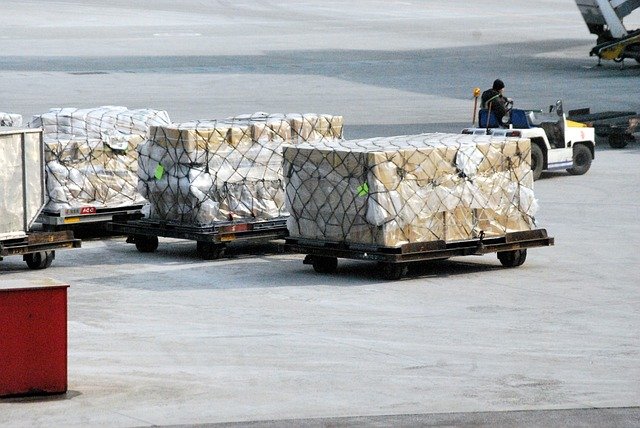
-
Cargo volume handled by domestic airlines nosedived 55% in 2020 from 2019 as a result of COVID-19 travel restrictions
-
This is the first time annual cargo volumes handled by domestic airlines slipped back to the 100 million kg territory since 2011 when volumes totaled 183.313 million kg
-
Of the 11 domestic carriers, only Cebgo and Seair International posted increases in cargo volumes handled last year
Travel restrictions due to COVID-19 have reduced by 55% cargo volume handled by domestic airlines in 2020 from 2019.
Registered volume last year reached 149.707 million kilograms (kg), down from 331.482 million kg lifted in 2019, data from the Civil Aeronautics Board (CAB) showed.
Annual cargo volumes handled by domestic airlines have not dropped to the 100 million kg territory since 2011 when they totaled 183.313 million kg.
Of the 11 carriers on CAB’s list, only two posted increases in cargo volumes handled last year.
Airlines started suspending their domestic and international flights mid-March 2020 amid travel restrictions imposed locally and internationally to contain COVID-19. Only repatriation, sweeper, and cargo flights were allowed during the period until June, when restrictions were eased and limited domestic flights were allowed.
Philippine Multimodal Transport and Logistics Association, Inc. president Marilyn Alberto earlier said capacity had been depleted by the grounding of aircraft and the disappearance of belly capacities in passenger aircraft.
She also observed how lack of capacity had led to a shift from scheduled flights to charter flights, and to an increase in freighter flights and the emergence of “preighters,” or passenger aircraft used as freighters.
Low-cost carrier Cebu Pacific continued to have the biggest chunk of the total, carrying 49% of volume or 73.076 million kg, 51% lower than the 148.562 million kg handled in 2019.
PAL Express (PALEx) was also still in second spot, airlifting 18% or 26.457 million kg, 69% down from its 86.700 million kg recorded in 2019.
PALEx’s sister airline, Philippine Airlines (PAL), remained closely in third place with 26.065 million kg or 17% of the total. This is, however, a decrease of 52.5% from the 54.878 million kg PAL carried in 2019.
Contributing 8% to the total and still in fourth place was AirAsia Philippines with 11.784 million kg, a 64% drop from 32.853 million kg in 2019.
Cebgo, on the other hand, handled 66% more cargo last year with 6.001 million kg from 3.621 million kg in 2019. The carrier, which accounted for 4% of the total and was still in fifth place, operates its sister airline Cebu Pacific’s dedicated freighter service launched in the second half of last year. Cebu Pacific earlier said it had continued to operate all-cargo flights even during the community quarantine period that started mid-March.
Remaining in sixth spot and also registering an increase was leisure airline Seair International with 2.1% share or 3.083 million kg. This is 24% higher than the 2.487 million kg it carried in 2019.
Pan Pacific Airlines, formerly Astro Air International Inc., started handling cargoes in the second quarter of 2020 and accounted for 1.5% or 2.297 million kg of the total.
Charter airline Island Aviation Corp., which started cargo operations in the third quarter of 2019, dropped down to eighth place with 0.3% share or 451,627 kg, which is 13% lower than the 520,033 kg it handled in 2019.
Falling to ninth place with 381,264 kg or 0.25% of the total was Magnum (Skyjet) Air. The leisure airline’s 2020 volume was 66% down from the 1.114 million kg it posted in 2019.
Boutique airline AirSwift was still in 10th place, carrying 0.07% of the total or 109,096 kg, which is an 83% contraction from the 649,433 kg recorded in 2019.
Posting the biggest drop was charter airline and seaplane operator AirJuan Aviation, Inc., which carried just 1,782 kg, a 98% decrement from the 94,260 kg it carried in 2019. – Roumina Pablo




